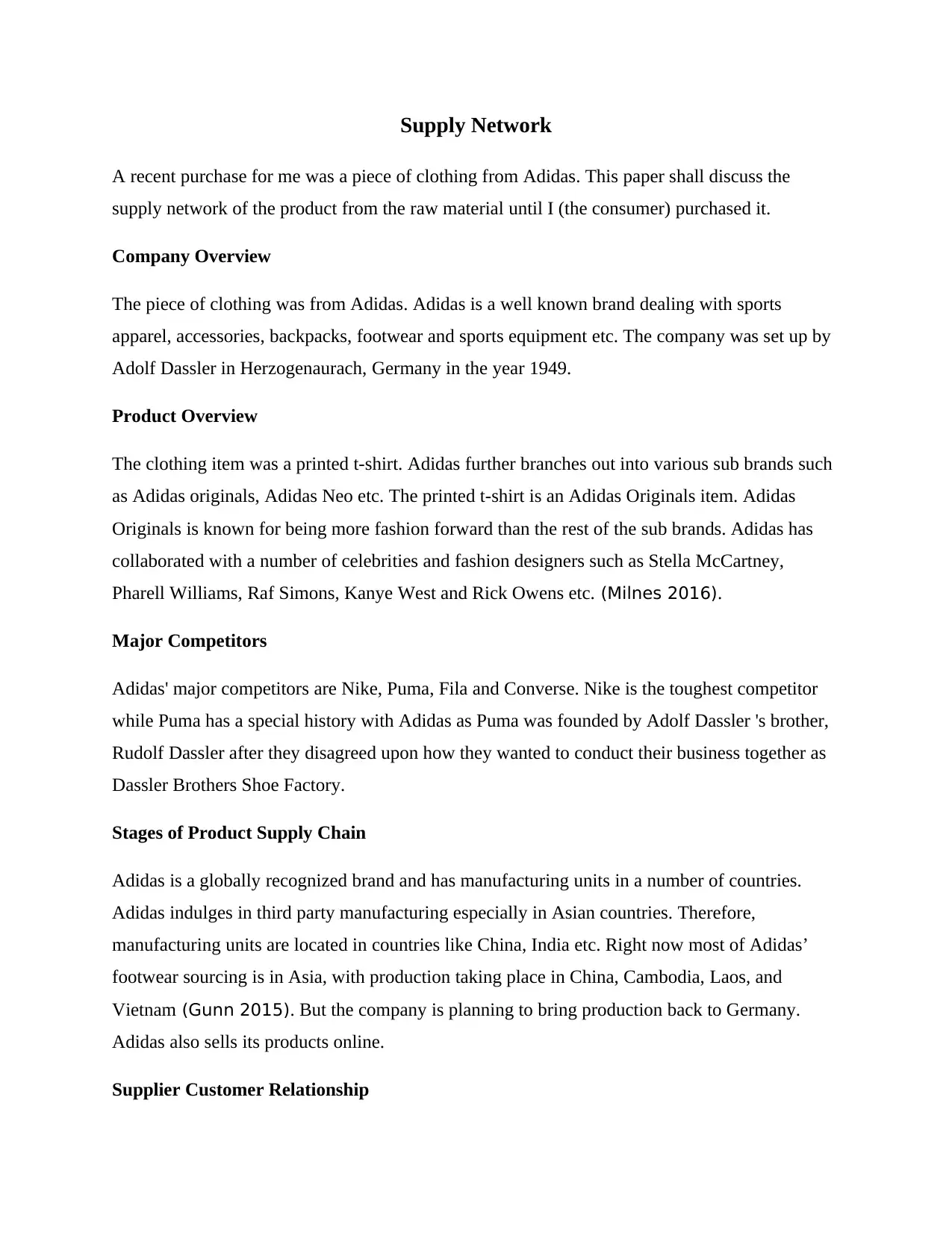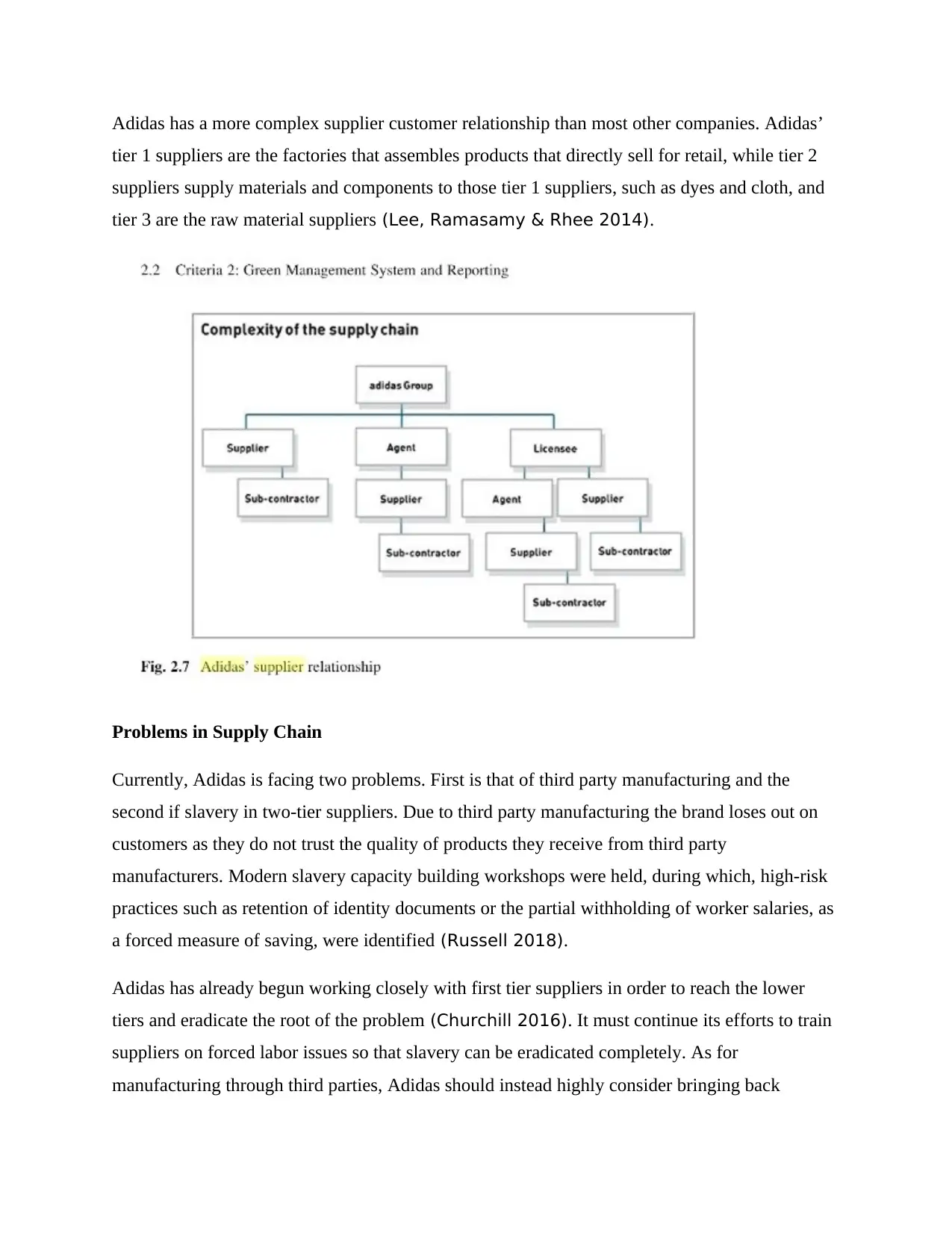Supply Chain Analysis: Adidas T-Shirt from Raw Materials to Consumer
VerifiedAdded on 2021/04/16
|3
|719
|83
Report
AI Summary
This report analyzes the supply network of an Adidas t-shirt, tracing its journey from raw materials to the consumer. It provides a company overview of Adidas, including its history, product lines, and major competitors like Nike and Puma. The report details the stages of the product supply chain, highlighting Adidas' reliance on third-party manufacturing, particularly in Asian countries. It explores the complex supplier-customer relationships, identifying tier 1, tier 2, and tier 3 suppliers. Furthermore, the report addresses key problems within the supply chain, such as the loss of customer trust due to third-party manufacturing and the issue of modern slavery in two-tier suppliers. It discusses Adidas' efforts to combat these issues, including capacity building workshops and collaborations with first-tier suppliers to reach lower tiers. Finally, the report suggests potential solutions, such as bringing production units back to Germany and the United States. The report concludes with a list of references.
1 out of 3










![[object Object]](/_next/static/media/star-bottom.7253800d.svg)